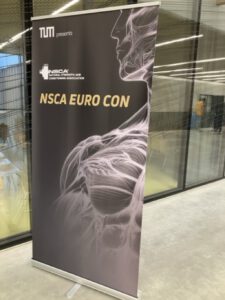
Here I am at the National Strength and Conditioning Associations European Conference 2025! I was looking forward to Boyd Epley making the opening address, and he delivered. One of the NSCA founders, he also started Husker Power which became the blueprint for NCAA strength and conditioning programmes. His book, The Path to Athletic Power1 had a huge impact on my coaching style, which in turn helped me to help countless athletes achieve their sporting goals and win championships. Two decades later, my offseason training plans still look a lot more like his than anything else. As new research, equipment and ideas came forth, I tested them. Most often the results were inferior to the old Husker Power protocol. Of course some small yet meaningful tweaks have worked their way in; such as exercise variations (BP for speed), and skipping the sets of 10 and 8 in the peak phase (takes time, but doesn’t seem to enhance adaptation). Major lifts, ground based, 4 days on a heavy-light and power-strength split… and no running! Yes, to maximize speed adaptations, we don’t run in the off-season. We lift lift heavy things as fast as possible.
Preseason is a completely different story, and Al Vermeil made a presentation at a previous NSCA conference that pointed me in the right direction for speed development. His influence on how I train athletes is marked, as is that from Andy Higgins (the guy who literally wrote the book2 that became the template for every 100 m record holder in the last 40 years.). Together they got me thinking about phases of sprinting with a neuromuscular rather than biomechanical emphasis –without ignoring the biomechanics. When combined with modern scientific understanding of functional anatomy, contractile properties, motor control, and adaptation processes, this can also be applied to other actions like shuffling or kicking or a slap-shot. I digress…
Of course, Epley’s talk was interesting. He outlined some of the key Husker Power concepts and milestones in the development of that programme, and the NSCA. I got to chance to say hello afterwards and thank him for his work. I was a little star struck. He shrugged off my compliments with humility and charm.
Travis Triplett and Ian Jeffreys were also great. It was particularly interesting how all three pointed out the importance of performance results from strength and conditioning, and that as an association (as well as many coaches and sport scientists within the NSCA and without) we have strayed from this somewhat. Modern technology and the need to publish has produced myriads of data and fancy equipment, but only a fraction of that is practical or meaningful. Consequently, many in the field are victims of group think and fail to address/understand/investigate things that actually make players winners. Amen, Ian! Aerobic base2 , false steps3 , flexibility4 , unstable surfaces… I’ve already posted Insights on some of these. Tomorrow, another long-time NSCA member, Paul Comfort, will touch on maximal strength. I have a feeling it will be along the lines of what I wrote about a version of the bench press that is best for speed development and performance, in place of another variation that permits heavier loading5 . Stay tuned…
–CG
- Epley, B. The path to athletic power: The model conditioning program for championship performance. Champaign, IL: Human Kinetics, 2004.
- Mach, G. and Higgins, A. (1980). Sprints and Hurdles. Canadian Track and Field Association.
- https://goodmanspeed.com/athletic/is-this-an-april-fools-joke/
- https://goodmanspeed.com/cognitive/the-problem-with-optical-timing-gates/
- https://goodmanspeed.com/athletic/flexibility-not-all-its-cracked-up-to-be/
- https://goodmanspeed.com/technical/bench-press-for-speed-part-1/
